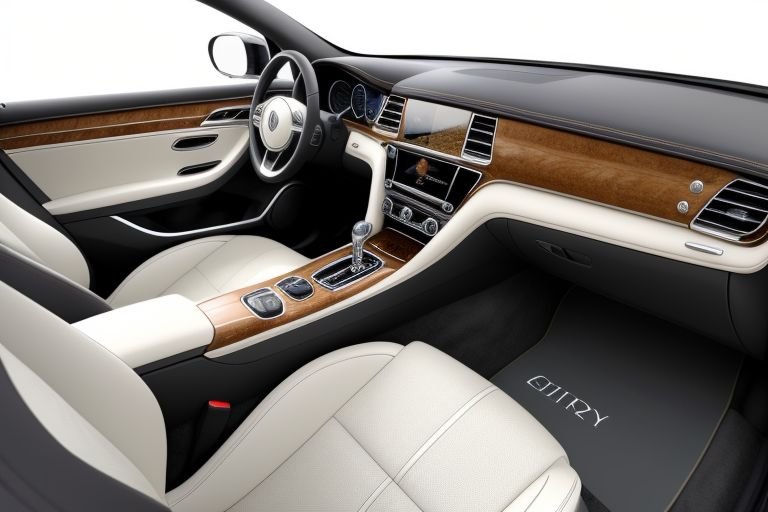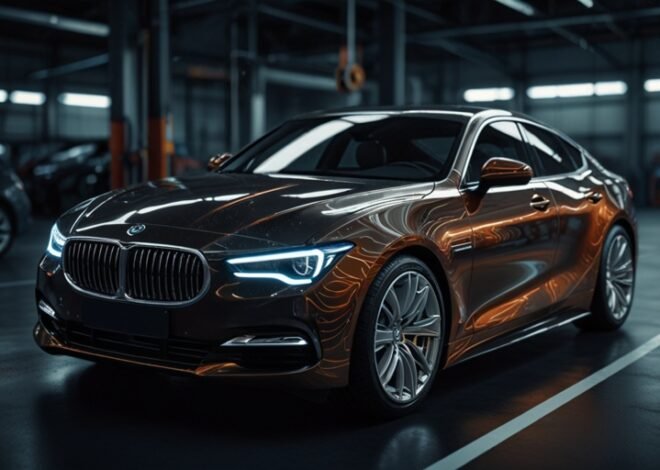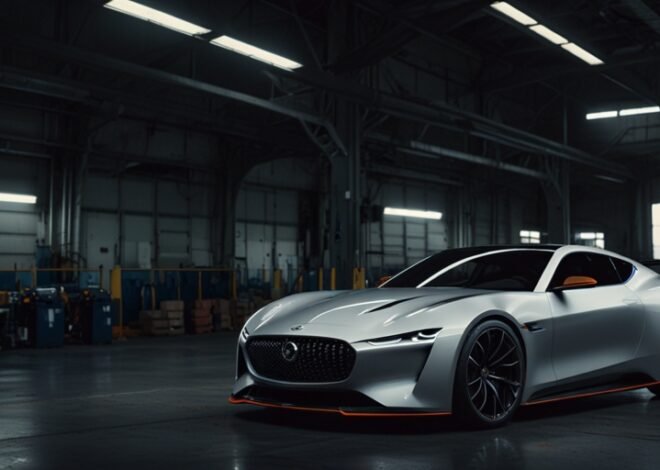
Luxury Car Brands Embrace Sustainable Materials For Interior Design
Luxury car companies are making a major change by adopting eco-friendly and sustainable materials for their vehicle interiors. This change shows an increasing consciousness about environmental issues and shifting buyer tastes; major brands take the lead in creative and ethical design.
In the past luxury car interiors were identified with quality leather and stunning wood details. Sustainable luxury is on the rise thanks to improvements in material engineering and a vow to cut down on environmental effects. Leaders in this field include BMW and Mercedes-Benz who investigate numerous sustainable materials that provide luxury and environmental responsibility.
A notable trend in this field is the creation of vegan leather substitutes. The goal of these materials is to duplicate the visual and tactile features of traditional leather while extremely lowering the environmental costs of animal agriculture. BMW is operating with a leather-like material made from cacti known as Deserttex. Produced without wastewaters this material produces a soft and resilient surface that resembles traditional leather. The microfiber Dinamica is now a feature in Mercedes-Benz’s car interiors produced from recycled materials.
With its emphasis on Scandinavian design values Volvo has been expanding sustainable luxury using recycled and renewable materials. The designs within Volvo include seating made from recycled PET bottles and carpets produced from reclaimed fishing net fibers. By implementing this strategy companies eliminate waste and recycle resources that risk being thrown away.
Many have been taken aback by Bentley’s entrance into eco-friendly materials. Vegea has become a focus for exploration by the British luxury car firm’s research team as it seeks vegan leather alternatives derived from winemaking waste. Bytapping into the potential of waste materials such as grape seeds and skins this innovative material creates a posh and eco-friendly upholstery alternative.
In addition to leather substitutes automakers investigate diverse sustainable materials for their interiors. The fast growing and renewability of bamboo enables its use in many luxury vehicle interiors. This product is appealing because of its attractive design and strength. The appeal of eucalyptus wood as a sustainable and rapidly growing material is on the rise with luxury brands.
In recent years recurrent plastics have taken on a key significance in ecologically focused design. A lot of premium auto companies are employing recycled plastic for frames of seating and trim parts. By using these materials firms cut down on the consumption of virgin plastics and confront the global challenge of plastic waste.
The goal of eco-friendly design is wider than just what appears. Luxury car makers are concentrating on the hidden parts of their vehicles. A number of companies are looking into the application of natural fibers like hemp and flax instead of fiberglass in composite materials. These natural materials furnish the same weight and strength as traditional solutions and are friendlier to the planet when produced and no longer needed.
Sustainability is finding advancement in the realm of acoustic materials. Conventional materials to reduce noise typically depend on petroleum-derived products. However new solutions consisting of recycled fabrics and natural foams are now available. Offering outstanding soundproofing qualities and aiding in better air quality these materials significantly lower emissions of VOCs in conventional materials.
The use of sustainable materials in high-end cars carries its own set of obstacles. To launch new materials manufacturers have to focus on factors such as durability and consistency. These eco-friendly options must exceed the expectations of high-quality and performance set by luxury brands for their classy consumers.
The price factor emerges since various of these innovative products prove to be more expensive to manufacture than traditional options. With rising output and better technology it is expected that the difference in costs will diminish allowing sustainable luxury to become more attainable.
Redefining interiors with sustainability fuels innovations in the supply chain. Luxury car brands unite with emerging ventures and material creators to produce advanced materials that connect with their brand vision and sustainability agenda. These firms are establishing a new framework for sustainable material companies and increasing the potential achievable in automotive interior designs.
People tend to respond positively to the sustainable luxury interiors that hit market. A lot of luxury car shoppers are growing aware of their ecological footprint and choose to spend more on cars that support their beliefs. Sustainability is a favorite among younger luxury patrons who frequently value traditional luxury qualities together with eco-friendliness.
As technological progress in the auto industry unfolds sustainable interior styles are increasingly significant to the full vehicle design. Luxury providers understand that integrating sustainable techniques in both drivetrain technologies and interior components is vital for pleasing upcoming luxury vehicle purchasers.
Sustainable luxury interiors now reflect a core change in the design and production of high-end vehicles. The advancement of materials and technologies will lead to even greater innovative and sustainable choices within luxury vehicle offerings. In the coming years luxury cars will emphasize eco-friendly practices alongside their traditional features of luxury.
Luxury car brands’ quest for sustainable materials in interior design marks a major advancement for a car industry focused on environmental responsibility. As they refine their sustainable concepts these luxury brands redefine the benchmarks for premium vehicles in the 21st century.


